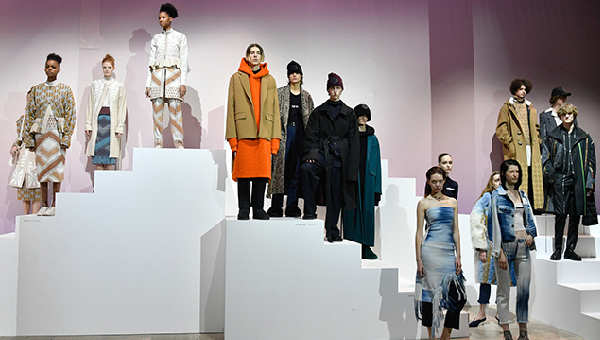Threads of Time: Exploring Fashion Through History

Fashion is a way for individuals to express their culture, society, and individual style. It has been significant in human history and has been impacted by various numerous experiences. From ancient times to now, the style has changed with innovation, society, economy, and art, shaping how we dress and decorate ourselves.
Ancient Civilizations: The Origins of Style
Returning to old times, Fashion has been around for quite a while. Individuals utilized attire for practical reasons, but also to show what their identity was, their social status, and their culture. Individuals made clothes cautiously from materials like wool, linen, and silk in ancient Mesopotamia, Egypt, Greece, and Rome. This showed how smart they were at making materials. Previously, individuals in these social societies thought clothing was vital and full of deep meaning. The rich and influential individuals wore extremely extravagant clothes for unique occasions or events. The clothes were enriched with lovely jewelry, designs, and symbols of their authority. From the clothes of ancient Egyptian kings to the flowing dresses of Greek women fashion showed people's significance and beliefs.
Medieval Europe: Fashion as a Reflection of Hierarchy
Individuals were divided into social classes and what they wore showed their place in the society in medieval Europe. Sumptuary laws controlled what individuals could wear, including the designs, materials, and colors, depending on their social status and wealth. The rich individuals flaunted expensive clothes made and produced using silk and velvet with extravagant jewels and designs. The poor people wore plain clothes in dull colors made of rough wool and linen. Fashion used to be about more than just looks. It was also about highlighting one's social status and indicating one's place in society. Dressed indicated their status and values in medieval Europe, how merchants, clergy, and knights.
Renaissance and Baroque: The Flourishing of Artistic Expression
In European fashion, The Renaissance and Baroque times were a big change. Individuals start making more imaginative and extravagant clothes. In Italy, during the Renaissance, clothes were utilized to show art, with extravagant textures enriched with itemized stitching, jewelry, and laces. The extravagant clothes individuals wore during the Renaissance showed how rich and tasteful they were. The clothes were made to fit individuals' bodies flawlessly, the Baroque time made style considerably fancier, with fancy ensembles and lots of decorations like pearls, ruffles, and bows. Individuals wore these outfits to fancy parties and masquerade balls. Fashion became a show, an approach to intriguing and enchanting individuals, as rich individuals vied for consideration and status with their extravagant clothes.
The Rise of Industrial Revolution: From Handcraft to Mass Production
The fashion industry changed a lot with the Industrial Revolution in the 18th and 19th centuries. There was more creation and individuals began purchasing significantly more things. New machines like the turning jenny and power loom made it conceivable to make lots of clothes rapidly and efficiently. As a result, cotton and wool fabrics became more accessible and more affordable than ever before. This made style accessible to additional individuals, so middle-class individuals could manage the cost of popular clothes. Ready-made clothes turned out to be more common than especially custom-made ones. Big shops and catalogs made it simpler for individuals to purchase lots of various accessories and clothes. It became something that everybody needed fashion turned out to be something beyond something for rich individuals. Trends changed rapidly because individuals' preferences and what they needed to buy changed as well.
20th Century: Fashion as a Reflection of Modernity
Showing how society was evolving as well, how individuals dressed changed a lot during the 1900s. At the outset, notable fashion brands like Chanel, Dior, and Givenchy began making truly unique clothes for women. Their new designs changed individuals' opinions on what women ought to wear. People started dressing more comfortably for sports and relaxing activities in the years between the two world wars because having free time became more significant in cities. After the war, fashion opened up to additional individuals because clothes that were prepared to wear became less expensive and simpler to track down, after the war. Young people in the 1960s and 70s did things any other way and didn't keep customary guidelines for how they dressed or acted. They evaluated bold and new styles to flaunt their remarkable characters and to go against the typical approaches to getting things done. Quick fashion became famous due to globalization and innovation in the second half of the century. This made trends change quicker, but also, raised stresses over what it means for the environment and if it is made moral.
21st Century: Fashion in the Digital Age
Fashion has evolved in the 21st century as a result of environmental concerns, global connectivity, and the digitization of everything. All over the world, Social media platforms like Instagram and TikTok have made it feasible for new fashion designers and influencers to impart their work to individuals all over the world. New technology has changed how clothes are made, sold, and showcased. Fashion that is made fairly and is good for the environment is what people want. They need to know what it means for the world and individuals. Fashion in the 21st century shows how associated the world is. Various individuals' ideas meet up to make recent trends and ways of putting ourselves out there.
Conclusions
Fashion is something other than looks. It shows the complexities of society and culture. Fashion has changed significantly over the long run as a result of how things are in society, how much money individuals have, and the innovation we have. It demonstrates how individuals feel about what their identity is, their social standing, and how they put themselves out there. Whether it's the fancy clothes people wore in the past or the trendy styles we have today, fashion always fascinates and excites us. It shows us how innovative and sharp individuals can be. Let us keep in mind, as we travel through history, how fashion can unite us as individuals no matter what, where, or when we are. It demonstrates our common humanity.








